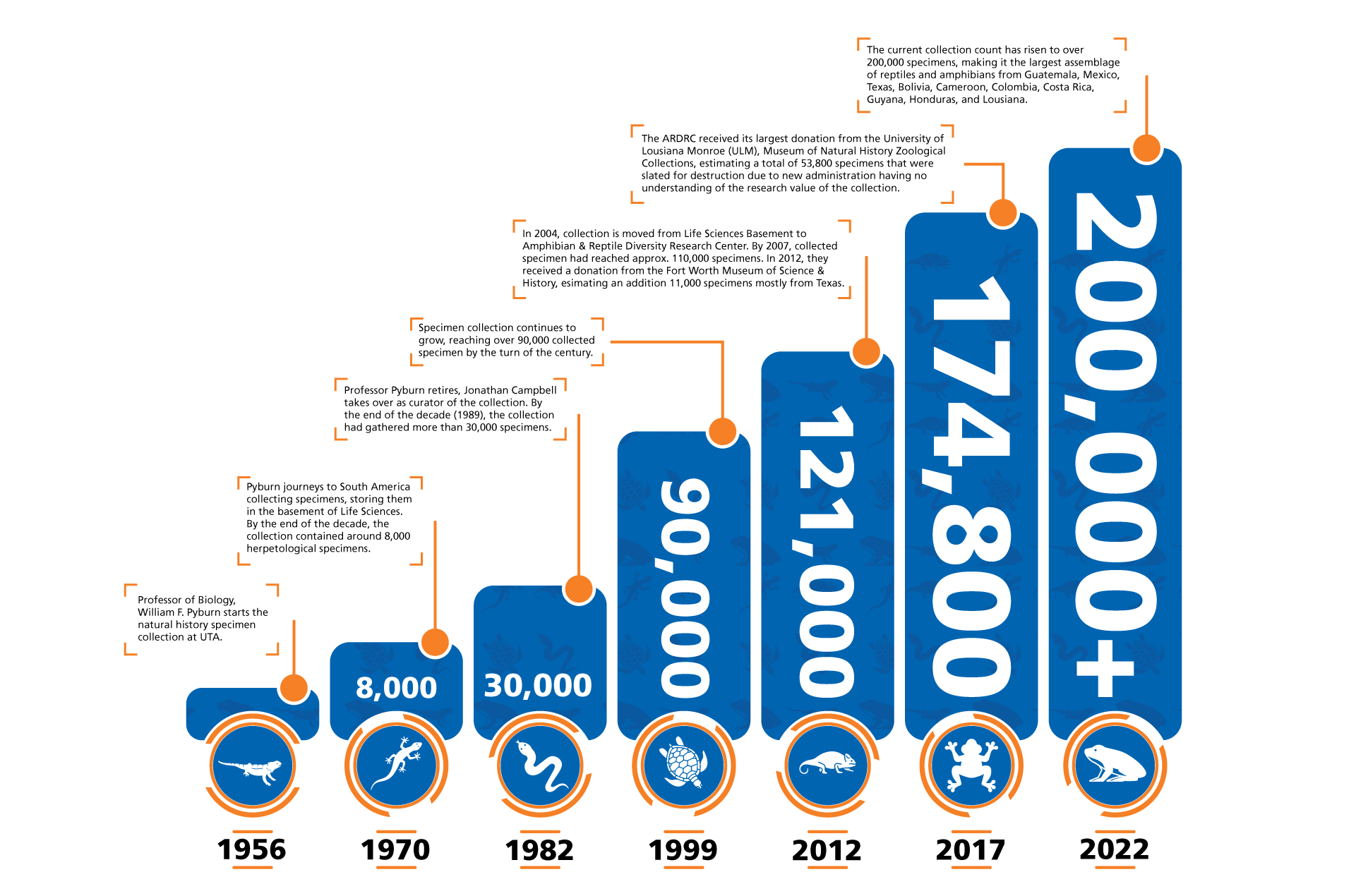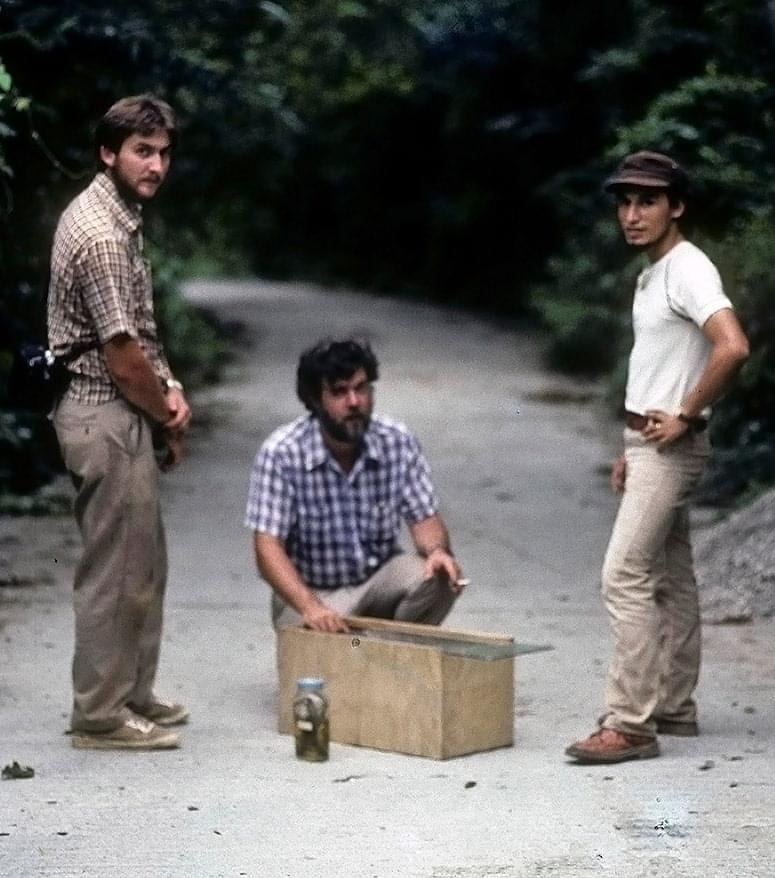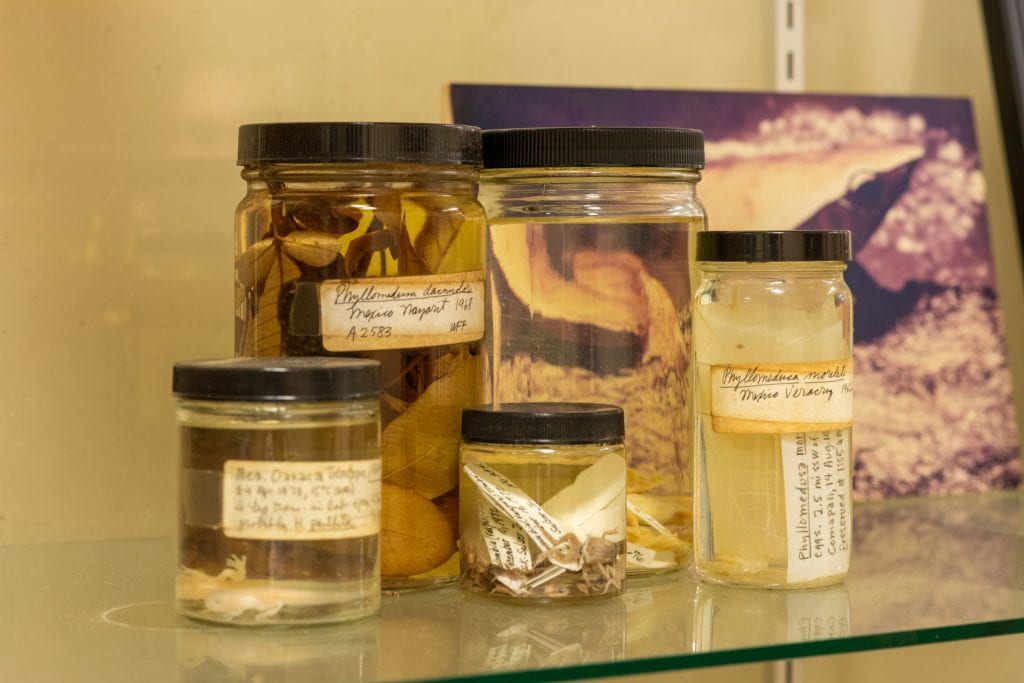
The UTA Amphibian and Reptile Diversity Research Center began as a natural history specimen collection. It was started in 1956 by UTA professor of biology William F. Pyburn, a world-renowned herpetologist who wanted specimens to use as teaching tools for his students. The original purpose of the collection was to assist students in the classroom when unfamiliar aspects of animal anatomy or natural history were being discussed. For this purpose Pyburn and his students acquired a variety of mammal, bird, reptile, and amphibian specimens. As years passed and the collection grew, it also began to serve as a repository for specimens collected from field expeditions.
It was during the 1970s that Pyburn began his southward sojourns to the jungles of Colombia in South America. These ventures were not for anyone less than intrepid, as Pyburn often made the entire journey by car from Arlington. However, the traveling paid off and as a result Pyburn not only collected numerous specimens for the University, but along the way made some very interesting scientific discoveries. Today the unique specimens he collected are still considered highly valuable to herpetology. In the early 1970s the growing collection found a home in the basement of the Life Sciences Building, eventually filling multiple rooms.

The 1980s were a time of tremendous growth in the collection. Prior to the 1980s the collection contained approximately 8,000 herpetological specimens; by the end of the decade, it had more than 30,000 specimens. Pyburn retired in 1982 and Jonathan Campbell, professor of biology and highly respected herpetologist, took over as curator of the collection. The collection continued to grow at an almost exponential rate in the 1990s and totaled more than 90,000 specimens by the end of the decade. This, combined with efforts from faculty and students, helped to establish national and international recognition for the collection.
By the turn of the century, the ever-growing collection had outgrown its space in the Life Sciences Building basement. In 2004 the entire collection was moved to a newly constructed facility, the Amphibian and Reptile Diversity Research Center, on the west side of campus. By 2007, the collection had reached approximately 110,000 specimens.
At that point, as a major research collection, the ARDRC quickly became a hub for the donation of material from smaller museums that no longer had the funding to support the maintenance of their collections. In 2012, the ARDRC received approximately 11,000 specimens from the Fort Worth Museum of Science and History, largely consisting of specimens from Texas.
In 2017, the third largest research collection of reptiles and amphibians in Louisiana, the University of Louisiana-Monroe (ULM) Museum of Natural History Zoological Collections, donated the entirety of its herpetological holdings to UTA. These 53,800 specimens were slated for incineration by a new university administration that no longer understood the research value in its natural history collections. With less than 6 months of time before the specimens would be forcibly disposed of by the university, enormous efforts were made by the ULM collections team to transfer the collections to UTA as quickly as possible. The specimens were transported to the ARDRC just in time, where they are now being carefully curated and utilized for research.
Currently, these two orphaned collections are being curated as separate (non-digitized) parts of the UTA collection until the funding can be procured to large-scale catalogue and digitize these data into the broader UTA system. Bolstering the size and diversity of the collection, these recent acquisitions put the ARDRC at over 200,000 specimens, making it one of the largest herpetological collections in the country and by far the largest in Texas.

Aside from housing a major herpetological collection, the UTA Department of Biology facilitates the academic pursuits of a large and diverse student body. This has provided inherent benefits to the Center’s museum collection as well. The ARDRC today has the world’s largest assemblage of reptiles and amphibians from Guatemala as well as significant holdings from Mexico, Texas, Bolivia, Cameroon, Colombia, Costa Rica, Guyana, Honduras, and with the inclusion of recent acquisitions, Louisiana.
Along with hundreds of thousands of fluid-preserved specimens, the collection contains numerous type specimens (including over 130 primary types), a sizeable osteological collection, cleared and stained specimens, audio recordings of frog calls, one of the largest collections of herpetological photographs in the United States, as well as a comprehensive herpetological library.
